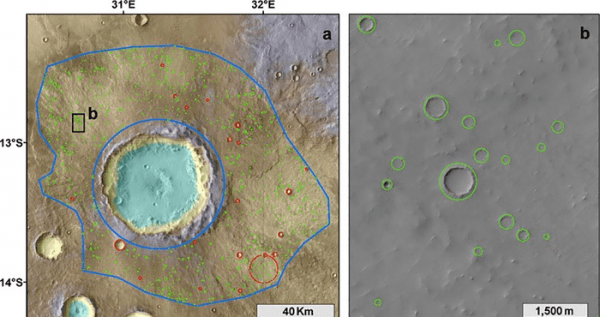New Curtin University research has confirmed the frequency of asteroid collisions that formed impact craters on Mars has been consistent over the past 600 million years.
The study, published in Earth and Planetary Science Letters, analysed the formation of more than 500 large Martian craters using a crater detection algorithm previously developed at Curtin, which automatically counts the visible impact craters from a high-resolution image.
Despite previous studies suggesting spikes in the frequency of asteroid collisions, lead researcher Dr Anthony Lagain, from Curtin’s School of Earth and Planetary Sciences, said his research had found they did not vary much at all for many millions of years.
Dr Lagain said counting impact craters on a planetary surface was the only way to accurately date geological events, such as canyons, rivers and volcanoes, and to predict when, and how big, future collisions would be.
Read more at Curtin University
Image: One of the 521 large craters that has been dated in the study. The formation age of this 40km crater has been estimated using the number of small craters accumulated around it since the impact occurred. A portion of these small craters are shown on the right panel and all of them have been detected using the algorithm. In total, more than 1.2 million craters were used to date the Martian craters.


